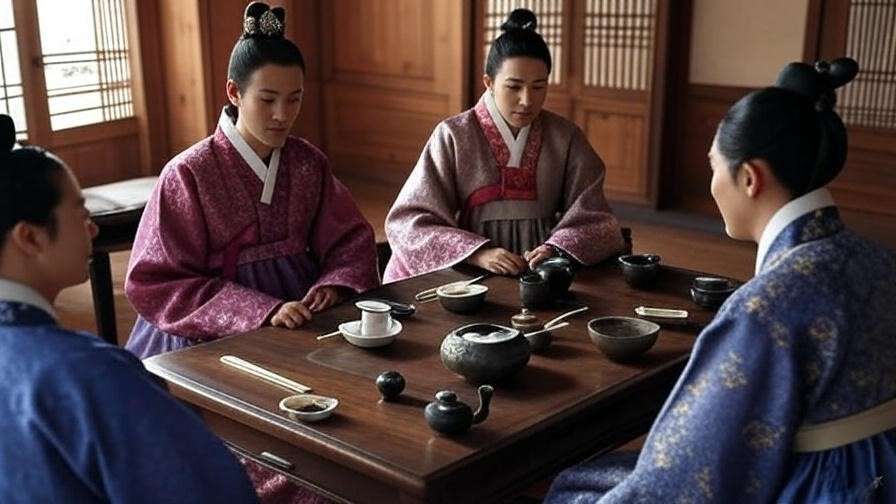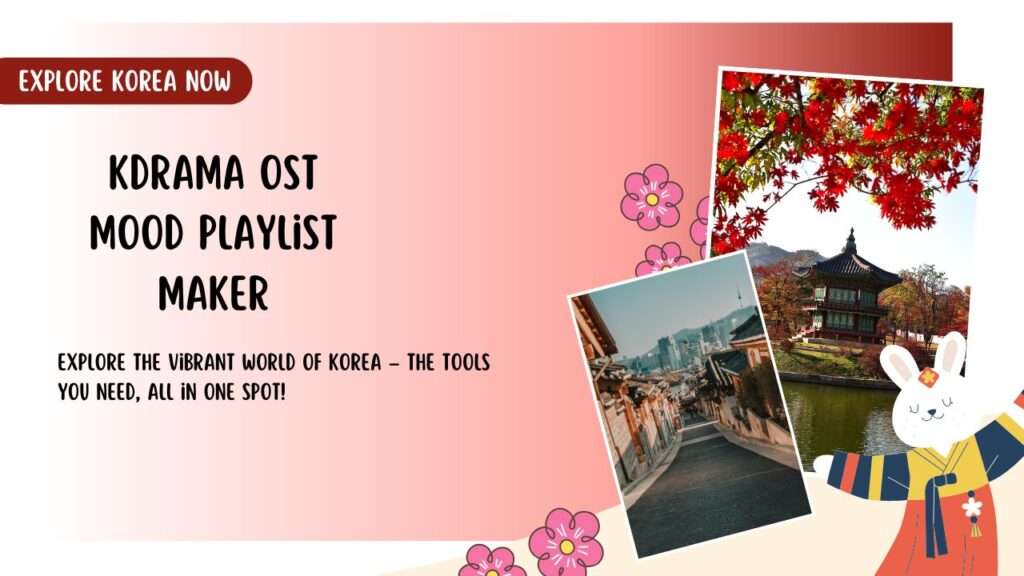Picture this: you’re hosting a cozy dinner inspired by your favorite Korean drama, where friends gather around a beautifully crafted soban table, savoring homemade bibimbap and sharing stories late into the night. This iconic piece of Korean furniture, with its elegant lines and rich history, transforms any meal into a cultural experience. The soban table is more than just a piece of furniture—it’s a symbol of Korea’s heritage, blending tradition with modern appeal. In this guide, we’ll explore why the soban table is a must-have for enthusiasts of Korean culture and design lovers alike. From its historical roots to practical tips for incorporating it into your home, this article will show you how to embrace this cultural treasure.
Whether you’re a K-drama fan, a home decor enthusiast, or simply curious about Korean traditions, the soban table offers a unique way to connect with Korea’s past while elevating your modern space. Let’s dive into its story, craftsmanship, and timeless versatility.
What Is a Soban Table?
 Definition and Origins
Definition and Origins
A soban table is a low, portable wooden table traditionally used in Korean homes for dining, studying, or ceremonial purposes. Originating during the Joseon Dynasty (1392–1897), these tables were designed for Korea’s floor-based lifestyle, where people sat on cushions or mats. Compact and lightweight, soban tables were easily moved to suit various needs, from serving meals to hosting ancestral rites. Their name, derived from the Korean word soban (small table), reflects their practical yet elegant design.
Historically, soban tables were a staple in Korean households, from humble homes to royal palaces. They embodied the Confucian values of simplicity and functionality, with designs that prioritized both utility and beauty. Today, their timeless appeal makes them a sought-after piece for those looking to infuse their homes with Korean culture.
Cultural Significance
The soban table holds deep cultural meaning in Korea, symbolizing hospitality and togetherness. In traditional settings, families gathered around a soban to share meals, fostering a sense of community. During jesa (ancestral rites), these tables were used to present offerings, reflecting respect for ancestors—a cornerstone of Korean tradition. Their presence in historical K-dramas like Dae Jang Geum or Mr. Sunshine has introduced global audiences to their charm, sparking interest among fans of the Korean Wave (Hallyu).
As Dr. Kim Soo-jin, a historian at Seoul National University, notes, “The soban table is a living artifact of Korean culture, embodying centuries of craftsmanship and communal values that remain relevant today.” Its enduring presence in modern homes speaks to its versatility and cultural resonance.
The Craftsmanship Behind Soban Tables
 Materials and Construction
Materials and Construction
Crafted with meticulous care, soban tables are typically made from durable woods like zelkova, pine, or ginkgo, prized for their strength and natural grain. Artisans during the Joseon era used techniques like dovetail joints and hand-carved details to ensure longevity. Many tables were finished with natural lacquer, derived from the sap of the lacquer tree, which not only enhanced their beauty but also protected the wood from wear.
This eco-friendly approach aligns with modern sustainability trends, as traditional soban tables were built to last generations without synthetic materials. The craftsmanship reflects Korea’s respect for nature and balance, making each table a work of art.
Design Variations
Soban tables come in various regional styles, each with distinct characteristics. For example:
- Haeju Soban: Known for its sturdy, rectangular shape and minimal ornamentation, ideal for everyday use.
- Tongyeong Soban: Features intricate mother-of-pearl inlays, showcasing artistic flair.
- Naju Soban: Recognized for its elegant curves and lightweight design, often used for formal occasions.
These variations highlight the diversity of Korean craftsmanship, with some tables featuring geometric patterns or floral motifs. Museums like the National Museum of Korea display exquisite examples, inspiring modern designers to create reproductions that blend tradition with contemporary aesthetics.
Expert Tip: “Look for hand-carved details and natural wood grain to ensure authenticity,” advises Park Min-woo, a third-generation Korean furniture artisan. “A true soban reflects the maker’s skill and respect for tradition.”
Why Soban Tables Are Perfect for Modern Homes
 Aesthetic Appeal
Aesthetic Appeal
The soban table’s minimalist design makes it a natural fit for modern interiors, particularly styles like Scandinavian or Japandi (a fusion of Japanese and Scandinavian aesthetics). Its clean lines and warm wood tones add a touch of elegance without overwhelming a space. Whether placed in a sleek urban apartment or a cozy suburban home, a soban table serves as a striking focal point.
For K-drama fans, the soban evokes the charm of historical settings while remaining versatile enough for contemporary decor. Its low profile encourages a relaxed, floor-based lifestyle, perfect for creating intimate gathering spaces.
Practical Functionality
Beyond its beauty, the soban table is highly functional. Its compact size and portability make it ideal for small apartments or multifunctional rooms. Use it as:
- A coffee table for casual gatherings.
- A dining table for authentic Korean bapsang (meal spreads) with banchan (side dishes).
- A study desk for a minimalist workspace.
Modern adaptations include adjustable-height soban tables, catering to Western-style seating while preserving traditional aesthetics. This versatility makes it a practical choice for urban dwellers seeking space-saving solutions.
Cultural Connection
For enthusiasts of Korean culture, the soban table offers a tangible link to the traditions seen in K-dramas, K-pop music videos, or Korean cuisine. Pairing it with elements like hanji paper lamps or bojagi textiles creates an authentic Korean-inspired space. Hosting a Korean-themed dinner party with a soban table can elevate the experience, allowing guests to immerse themselves in the culture.
Case Study: Interior designer Lee Ji-eun transformed her Seoul apartment by incorporating a soban table as a coffee table, paired with floor cushions and ceramic tableware. “It’s become the heart of my home,” she says. “Guests love the cultural story behind it.”
How to Choose the Perfect Soban Table
Authenticity and Quality
Selecting an authentic soban table requires careful consideration. Look for:
- Materials: Opt for solid woods like zelkova or pine, avoiding particleboard imitations.
- Craftsmanship: Check for hand-carved joints and smooth lacquer finishes.
- Artisan Markings: Some tables bear the maker’s signature, a sign of authenticity.
Reputable sellers, such as Korean heritage shops or artisans on platforms like Etsy, often provide certificates of authenticity. Avoid mass-produced versions that lack the character of handmade pieces.
Checklist for Buyers:
- Verify wood type and origin.
- Inspect for handcrafted details (e.g., dovetail joints).
- Ensure a smooth, durable lacquer finish.
Size and Style Considerations
Choose a soban table based on your space and needs:
- Small Spaces: A compact rectangular Haeju soban fits apartments or cozy corners.
- Formal Settings: A larger Naju soban with curved legs suits dining areas.
- Budget Options: Modern reproductions are more affordable than antiques, while DIY kits offer a creative alternative.
Consider your decor style—minimalist designs pair well with modern interiors, while ornate Tongyeong soban tables suit eclectic spaces.
Where to Buy
Authentic soban tables can be found at:
- Korean Cultural Markets: Visit Insadong in Seoul or online marketplaces specializing in Korean crafts.
- Online Retailers: Platforms like Etsy or Coupang offer artisan-made tables.
- Specialty Stores: Stores like the Korea Furniture Museum’s shop provide curated selections.
Prioritize ethical purchasing by supporting Korean artisans or sustainable brands. Research seller reviews to ensure quality and authenticity.
Expert Tip: “Choose a soban that speaks to your style but respects its cultural roots,” says interior designer Kim Hye-rin. “It’s a piece that tells a story.”
Incorporating a Soban Table into Your Home
 Styling Ideas for Different Spaces
Styling Ideas for Different Spaces
The soban table’s versatility makes it a standout addition to any home. Here are some styling ideas to inspire you:
- Living Room: Use a soban as a low coffee table, surrounded by floor cushions for a cozy, Korean-inspired setup. Place a hanji paper lantern or a small ceramic vase on top to enhance the aesthetic. This setup is perfect for casual gatherings or K-drama watch parties, evoking the warmth of traditional Korean homes.
- Dining Area: Host a bapsang—a traditional Korean meal spread—with your soban table as the centerpiece. Arrange small bowls of banchan (side dishes), a bowl of rice, and a steaming pot of jjigae (stew) to create an authentic experience. For a modern twist, pair with sleek, minimalist dinnerware to blend tradition with contemporary flair.
- Bedroom or Study: Transform a soban into a minimalist desk for writing, reading, or working from home. Its low height encourages a focused, distraction-free environment. Add a stack of books or a small Korean calligraphy set for a scholarly vibe.
For visual inspiration, consider creating a Pinterest board with soban table setups or browsing Instagram hashtags like #KoreanDecor or #SobanTable for ideas. These platforms showcase how global design enthusiasts incorporate soban tables into diverse spaces.
Pairing with Korean Cultural Elements
To amplify the cultural authenticity of your soban table, pair it with other Korean decor elements:
- Hanji Paper Accessories: Use hanji (Korean mulberry paper) lamps or screens to add soft, diffused lighting that complements the soban’s warm wood tones.
- Bojagi Textiles: Drape a bojagi (traditional Korean wrapping cloth) over the table as a runner or use it as a wall hanging for a pop of color.
- Korean Ceramics: Display handcrafted pottery, such as celadon vases or white porcelain, to echo Korea’s artisanal heritage.
Hosting a Korean-themed dinner party? Set your soban with brass chopsticks, ceramic spoons, and a dolsot (stone bowl) for an immersive experience. Share dishes like bulgogi, kimchi, and japchae to delight guests and spark conversations about Korean culture.
Maintenance and Care
To keep your soban table in pristine condition, follow these care tips:
- Cleaning: Wipe the surface with a soft, damp cloth to remove dust. Avoid harsh chemicals, which can damage the lacquer finish.
- Polishing: Apply a natural wood oil, like linseed or tung oil, every few months to maintain the wood’s luster and prevent drying.
- Storage: If using an antique soban, store it in a dry, well-ventilated area to prevent warping or cracking.
For lacquered tables, avoid prolonged exposure to direct sunlight, which can fade the finish. Regular care ensures your soban remains a cherished heirloom for years to come.
Reader Tip: Share your soban styling ideas in the comments below! How do you plan to use this cultural treasure in your home?
The Soban Table in Korean Drama and Pop Culture
 Iconic Appearances
Iconic Appearances
The soban table has become a familiar sight for K-drama fans, gracing the sets of historical dramas like Mr. Sunshine, Kingdom, and Dae Jang Geum. In Mr. Sunshine, for instance, soban tables are used in intimate dining scenes, highlighting their role in fostering connection and tradition. These appearances not only showcase the table’s aesthetic appeal but also introduce global audiences to Korean heritage.
In modern K-dramas, soban tables often appear in contemporary settings, blending seamlessly with sleek interiors. This juxtaposition of old and new reflects the table’s timeless versatility, making it a favorite among set designers and viewers alike.
Influence on Global Design Trends
The soban table’s rise in popularity is closely tied to the Korean Wave (Hallyu), which has brought K-pop, K-dramas, and Korean cuisine to global audiences. As fans seek to emulate the aesthetics seen in their favorite shows, soban tables have become a sought-after item in interior design. Blogs like My Korean Home and Instagram influencers like @SeoulStyle have showcased soban tables in modern homes, inspiring a new generation of design enthusiasts.
The table’s minimalist design also aligns with global trends toward sustainable, multifunctional furniture. Its eco-friendly materials and space-saving features resonate with millennials and Gen Z, who prioritize authenticity and practicality in their decor choices.
Expert Insight: “The soban table is a perfect example of how traditional props can elevate storytelling in K-dramas,” says Choi Eun-kyung, a set designer for major Korean productions. “Its presence adds authenticity and draws viewers into the cultural narrative.”
Frequently Asked Questions (FAQs)
What is the difference between a soban table and other low tables?
A soban table is distinct for its Korean cultural roots, designed specifically for floor-based living during the Joseon Dynasty. Unlike other low tables, it emphasizes portability, craftsmanship, and cultural significance, often featuring unique regional designs like mother-of-pearl inlays or curved legs.
Can I use a soban table in a non-Korean home?
Absolutely! The soban’s minimalist design and versatility make it a seamless addition to any home, from Scandinavian-inspired apartments to eclectic lofts. Its cultural charm adds a unique story to your space.
Where can I find an authentic soban table?
Look for reputable sources like Korean cultural markets (e.g., Insadong in Seoul), online platforms like Etsy, or specialty stores such as the Korea Furniture Museum’s shop. Verify authenticity by checking for handcrafted details and artisan certifications.
How do I care for a wooden soban table?
Clean with a soft, damp cloth and avoid harsh chemicals. Apply natural wood oil periodically to maintain the finish. Store in a dry, well-ventilated area to prevent damage.
Are soban tables expensive?
Prices vary: antique soban tables can range from $500 to several thousand dollars, while modern reproductions start at $100–$300. Budget-friendly DIY kits are also available for crafty enthusiasts.
The soban table is more than a piece of furniture—it’s a bridge between Korea’s rich past and the modern world. Its exquisite craftsmanship, cultural significance, and versatile design make it a must-have for anyone passionate about Korean culture or seeking a unique addition to their home. Whether you’re hosting a Korean-inspired dinner, creating a minimalist workspace, or simply admiring its timeless beauty, the soban table brings warmth and authenticity to any space.
Ready to embrace this cultural treasure? Explore soban tables at trusted retailers, style them with Korean decor, and share your creations with our community. Let the soban table inspire you to celebrate Korea’s legacy in your home.
Call to Action: Have you incorporated a soban table into your space? Share your ideas in the comments or follow our site for more insights into Korean culture, from K-dramas to traditional crafts.




